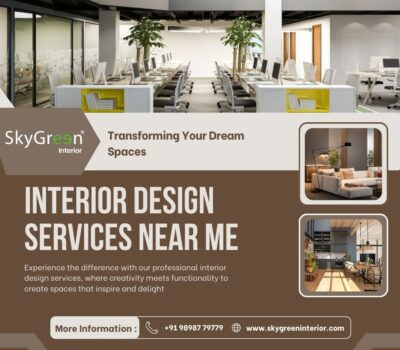Interior Design for Pharma Industry in Ahmedabad: Creating Functional and Aesthetic Spaces
Interior design in the pharmaceutical industry is a crucial element that significantly impacts the functionality, efficiency, and aesthetics of a pharmaceutical company’s workspace. Ahmedabad, a bustling hub for the pharmaceutical sector in India, presents unique opportunities and challenges for interior designers aiming to create optimal work environments.
This blog explores key considerations and strategies for effective interior design tailored to the needs of pharmaceutical companies in Ahmedabad.
Understanding the Unique Needs of the Pharma Industry
The pharmaceutical/pharma industry demands precision, cleanliness, and compliance with stringent regulatory standards. Therefore, interior design for pharma companies must prioritize:
1) Cleanroom Design: Cleanrooms are essential in pharmaceutical manufacturing and research. These controlled environments must be designed to minimize contamination and ensure product integrity. Materials used should be non-porous, easy to clean, and resistant to microbial growth.
2) Functional Workflow: Efficient workflow is critical in pharma settings to ensure smooth operations. The design should facilitate easy movement of personnel and materials, minimizing cross-contamination and ensuring safety. This includes strategically placed workstations, storage areas, and pathways.
3) Compliance and Safety: Compliance with Good Manufacturing Practices (GMP) and other regulatory requirements is non-negotiable. Interior design must incorporate features that meet these standards, such as proper ventilation, adequate lighting, and safe storage solutions for hazardous materials.
Pharma Industry: Gujarat's Pillar of Strength
Gujarat’s pharma industry has also witnessed a significant upswing with several international pharmaceutical giants establishing a strong presence in the state. Gujarat’s world-class infrastructure, skilled workforce, and favorable regulatory environment have contributed to this boom. With an ecosystem that fosters innovation and growth, it’s no surprise that Gujarat has become a pharmaceutical powerhouse.
The state’s growth in the pharma sector isn’t limited to manufacturing alone. Research and development centers, testing facilities, and contract research organizations have proliferated, paving the way for groundbreaking discoveries in healthcare. International clients have recognized Gujarat’s potential in the pharma industry, resulting in substantial investments and partnerships.
Aesthetic Considerations Interior Design Process for Pharma Firms in Ahmedabad
While functionality and compliance are paramount, aesthetics play a significant role in creating a positive work environment. A well-designed space can enhance employee well-being, productivity, and overall job satisfaction.
1) Ergonomic Design: Comfortable and ergonomically designed workspaces can reduce fatigue and increase efficiency. Adjustable furniture, appropriate lighting, and thoughtfully designed break areas contribute to a healthier work environment.
2) Biophilic Design: Incorporating elements of nature, such as plants and natural light, can significantly improve the workplace atmosphere. Biophilic design has been shown to reduce stress and enhance cognitive function, which is beneficial in high-stakes environments like pharmaceutical labs and offices.
3) Modern Aesthetics: Clean lines, modern materials, and a cohesive color scheme can make the workspace more appealing. A contemporary design not only impresses clients and visitors but also boosts employee morale.
Case Study: Innovative Pharma Interior Design in Ahmedabad
Let’s look at a hypothetical case study of a pharmaceutical company in Ahmedabad that successfully integrated these principles into its interior design.
SkyGreen Interior wanted to redesign its facility to improve compliance, efficiency, and employee satisfaction. They collaborated with a local interior design firm specializing in pharmaceutical spaces. The design process included:
- Assessment and Planning: Understanding the company’s workflow, compliance requirements, and employee needs.
- Design and Material Selection: Choosing materials like epoxy flooring and stainless steel workstations that are easy to sterilize and maintain. Incorporating HEPA filtration systems for air quality control.
- Ergonomics and Aesthetics: Installing adjustable desks and chairs, optimizing natural light, and adding green spaces within the facility.
- Implementation and Feedback: Executing the design plan with precision and gathering feedback from employees to make necessary adjustments.
The result was a state-of-the-art facility that not only met regulatory standards but also provided a pleasant and productive work environment.
Conclusion
Interior design for pharmaceutical companies in Ahmedabad is a specialized field that requires a balance between functionality, compliance, and aesthetics. By focusing on cleanroom integrity, efficient workflow, regulatory compliance, and employee well-being, companies can create spaces that enhance productivity and satisfaction. As Ahmedabad continues to grow as a pharma hub, innovative interior design will play a vital role in shaping the future of the industry.
For pharmaceutical companies looking to redesign their spaces, partnering with an experienced interior design firm that understands the unique demands of the industry is essential. This collaboration can lead to the creation of workspaces that are not only compliant and efficient but also inspiring and conducive to success.








